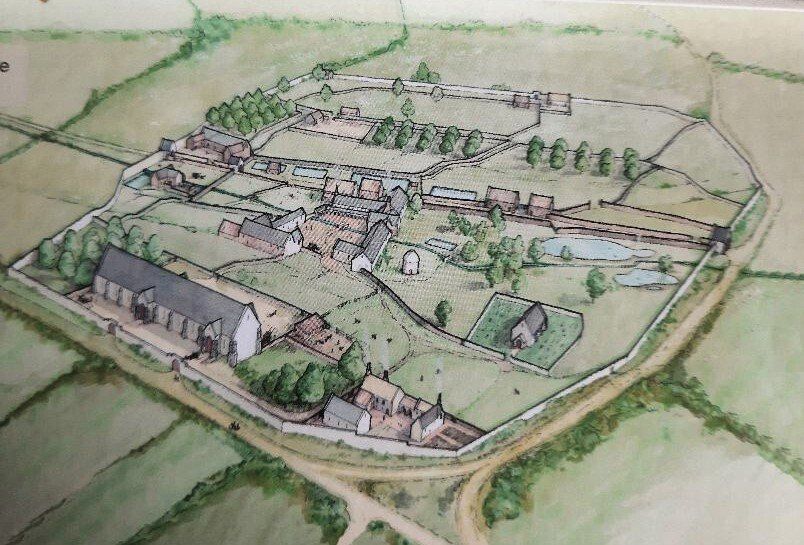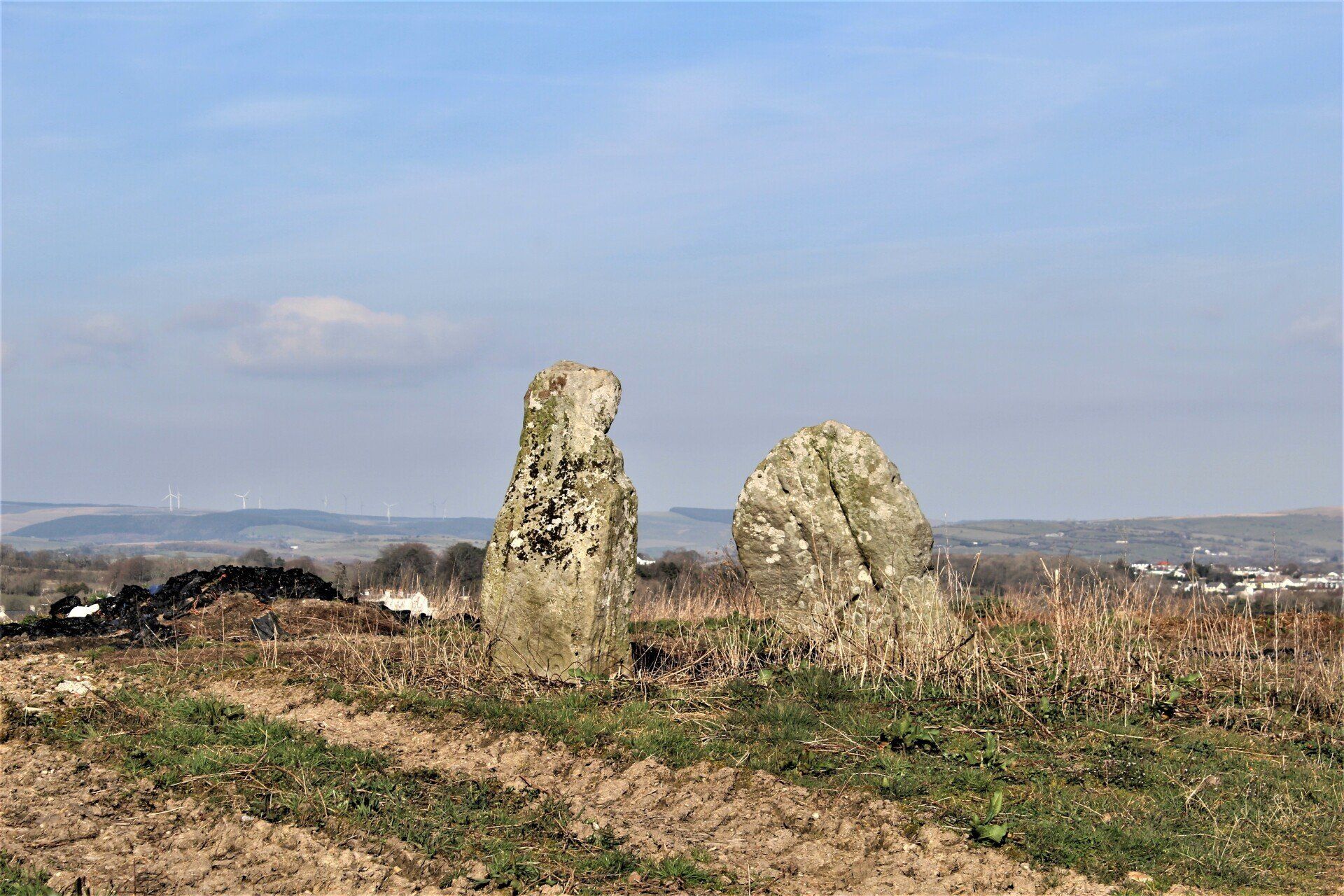Laleston
A Village Full of HistoryStanding stones
The standing stones are thought to be the remains of an entrance to the Medieval 11th century church yard of St Cewydd's Church. The two stones are all that remains of the medieval church and village of Llangewydd. Two carved ‘Celtic’ crosses were recovered from the area and are now on show at the National Museum of Wales.
There are a few plain standing stones in the hedge to the left of the two in the picture and many piles of stones from the buildings around the fields perimeter. There is no public access to the field as the land is now farmed. Scheduled Ancient Monuments (SAMs) have statutory protection.
In the early twelfth century the reformed Cistercians religious order spread from France across Europe, reaching Wales in 1131. Part of their ethos was that they wanted to farm their own land by the sweat of their brows. They preferred to settle on unused land and bring it under cultivation themselves. But there was very little unused land in England and Wales, but when they were given land which was already being farmed by tenant's, they would use a combination of persuasion or moral blackmail to remove the tenant farmers.
The Cistercian monks of Margam were given the land around Llangewydd in the middle of the twelfth century and within fifty years they had removed the church and the little settlement around it. It is said that in later years the land was then sold on to a local farm.
Cae'r Heneglwys



